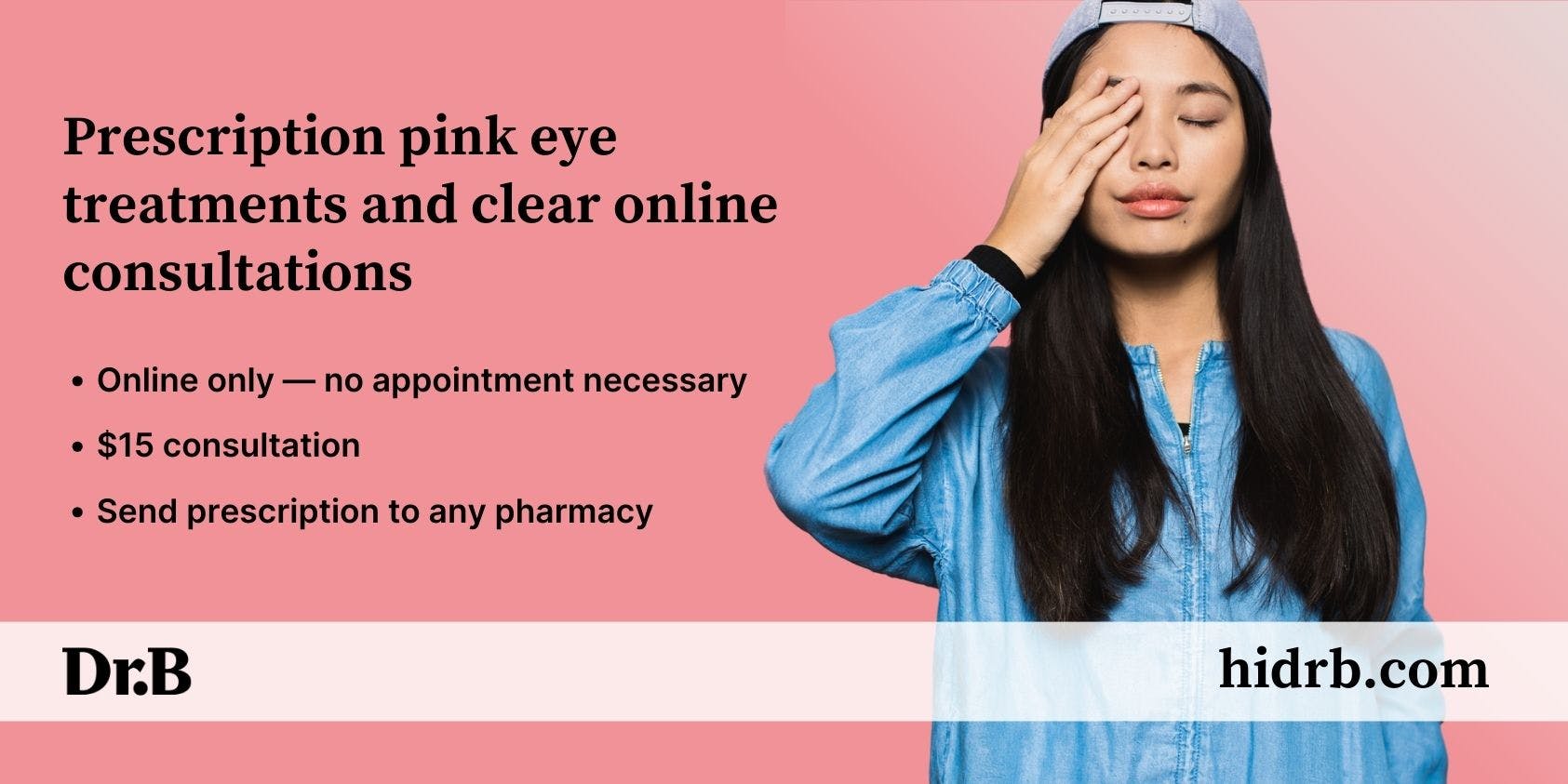
When does pink eye cause fever?

Key points:
- Pink eye (or conjunctivitis) is an irritation of the outer layer of the eye. The eye infection is usually caused by a virus, bacteria or allergies. Cases can spread quickly from the infected person to family, friends, colleagues or classmates via shared towels or other physical objects.
- Pink eye usually doesn’t cause a fever. But as it often develops after you’ve been sick with another infection (like a cold), you might get a fever from a related illness.
- If you have conjunctivitis symptoms and a fever, stay home until you feel better. If your symptoms last more than three days, reach out to a doctor for pink eye treatment like antibiotic eye drops or ointment.
Pink eye—or conjunctivitis—is an inflammation of the outer layer of the eye. Some different causes of pink eye include allergies, viruses and bacterial infections. Symptoms can look a little different depending on the cause. But all cases of pink eye include watery, red eyes that may include crusty discharge.
If you’re dealing with such sensitive, itchy and irritated eyes, you probably want to feel better as soon as possible.
Read on to better understand the connection between pink eye and fever. Then, how Dr. B can help you get same-day treatment with a convenient $15 pink eye consultation.
What causes pink eye?
Viral and bacterial conjunctivitis are often caused by an underlying illness like an upper respiratory infection. When this happens, it’s possible to have other symptoms like a cough, sore throat or a fever. But pink eye probably doesn’t cause the fever—it’s just a sign of the underlying infection.
Symptoms of pink eye
Wondering if your red, gritty eyes might be pink eye? The symptoms of conjunctivitis are easy to spot. They include:
- Itchy or watery eyes
- Crusty eye discharge
- Redness in the white part of the eye
- Sensitivity to light
- Eye burning or irritation
- A gritty, sandy feeling in the eye
- Waking up with eyelids crusted closed
- Tenderness around the eye
Conjunctivitis can cause some pain and tenderness around the eye. But the pain shouldn’t be severe. Get help right away if you notice any warning signs like:
- Severe pain
- Blurry vision that doesn’t get better after wiping your eyes
- Intense light sensitivity
- High fever
- Lots of swelling around the eyes
When can pink eye cause a fever?
This condition can be caused by bacteria, a virus or allergies—but a viral infection is the most common culprit.
Many people develop pink eye after coming down with another illness. If your viral pink eye was caused by something like the common cold or the flu, you might also have a fever. Conjunctivitis likely isn’t causing the fever—the underlying infection is.
However—in very rare cases—bacterial conjunctivitis can spread and cause more serious infections. When the infection spreads, you might also have a fever. But in this case, you’ll probably have other significant symptoms, like intense swelling or pain around the eye.
Pink eye vs. allergies
You might also experience itchy, watery or red eyes if you have allergies. This is actually a form of conjunctivitis! But allergic conjunctivitis isn’t contagious. It’s not caused by an infection. And your symptoms should go away once the allergen is removed.
Pink eye medications
Most types of pink eye are very contagious, spreading quickly from person to person within families, schools and the workplace.
Allergic and viral conjunctivitis generally get better on their own. Most cases of bacterial conjunctivitis improve without treatment—but antibiotics can clear symptoms quickly while reducing side effect risk. Providers often don’t test to determine which type of pink eye infection you have. Instead, they prescribe antibiotics in case it’s bacterial.
You can get antibiotic eye drops or ointments from a primary care provider or via Dr. B’s $15 online pink eye consultations.
The most common treatments include:
You can also help yourself feel better at home by:
- Using a warm or cool compress over your eyes
- Treating mild pain or fever with over-the-counter medicines, like Ibuprofen or Tylenol
- Applying artificial tears for redness or dry eyes
Most importantly, always wash your hands before and after touching your eyes. That will help prevent the spread of the illness to others.
When to get medical treatment for pink eye
It can be tough to know what’s causing your conjunctivitis. If your symptoms last more than a few days or are severe, it’s a good idea to get some medical help.
Dr. B can help clear your pink eye through a convenient $15 online consultation. Just fill out a short health questionnaire to start the process. A licensed provider will review your treatment and, if appropriate, send a prescription to your pharmacy of choice—usually within three hours.
So if you’re ready to see clearly again, get started today!
Sources
Centers for Disease Control. (2022). Conjunctivitis: treatment.
Centers for Disease Control. (2022). Conjunctivitis: causes.
Cronau, H., et. al. (2010). Diagnosis and management of red eye in primary care. American Family Physician.
Jacobs, D. (2023). Patient education: Conjunctivitis (pink eye). UpToDate.
Pink eye: what you should know. (2010). American Family Physician.
Sign up for the free Dr. B newsletter for a weekly report on the latest in healthcare + research-based advice for staying healthy and mentally well.


